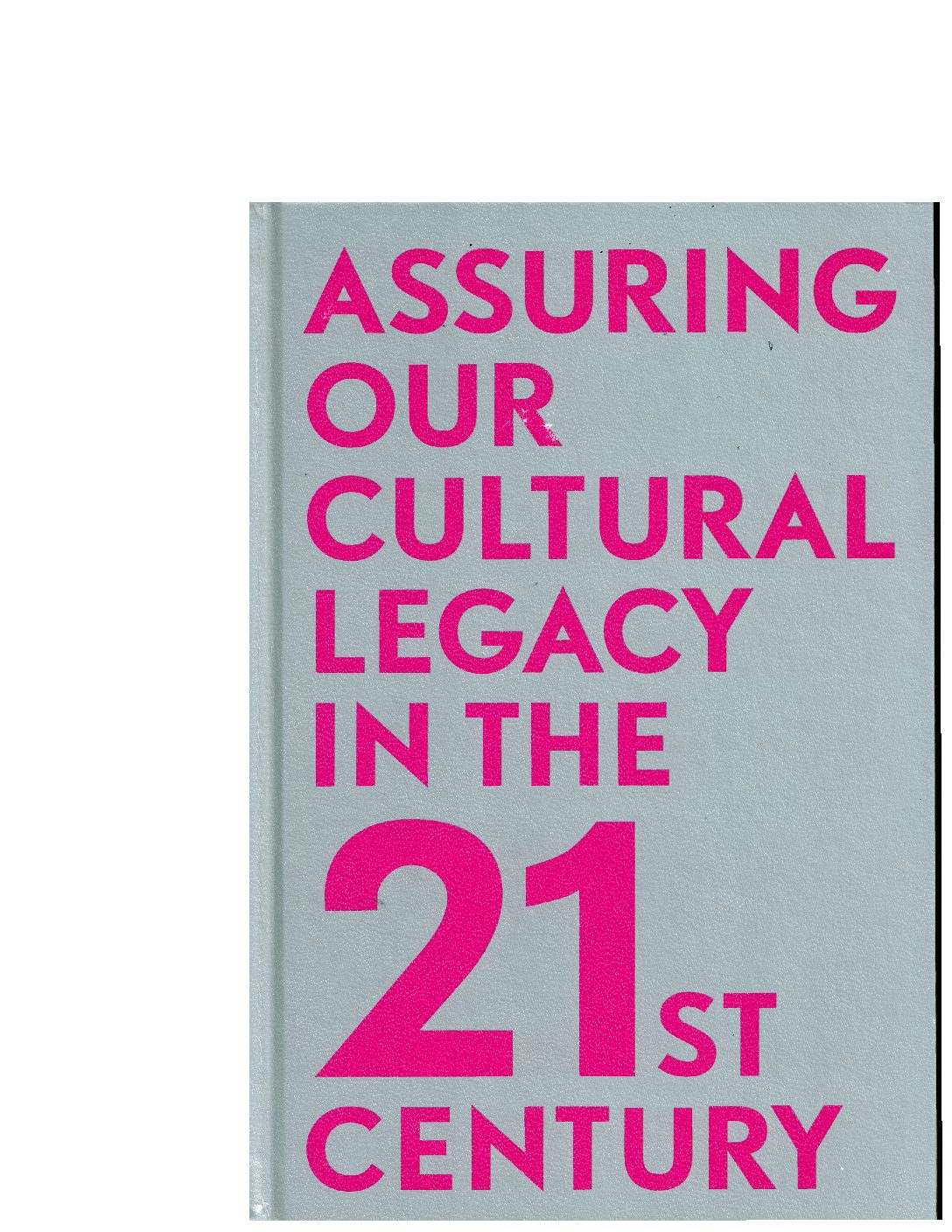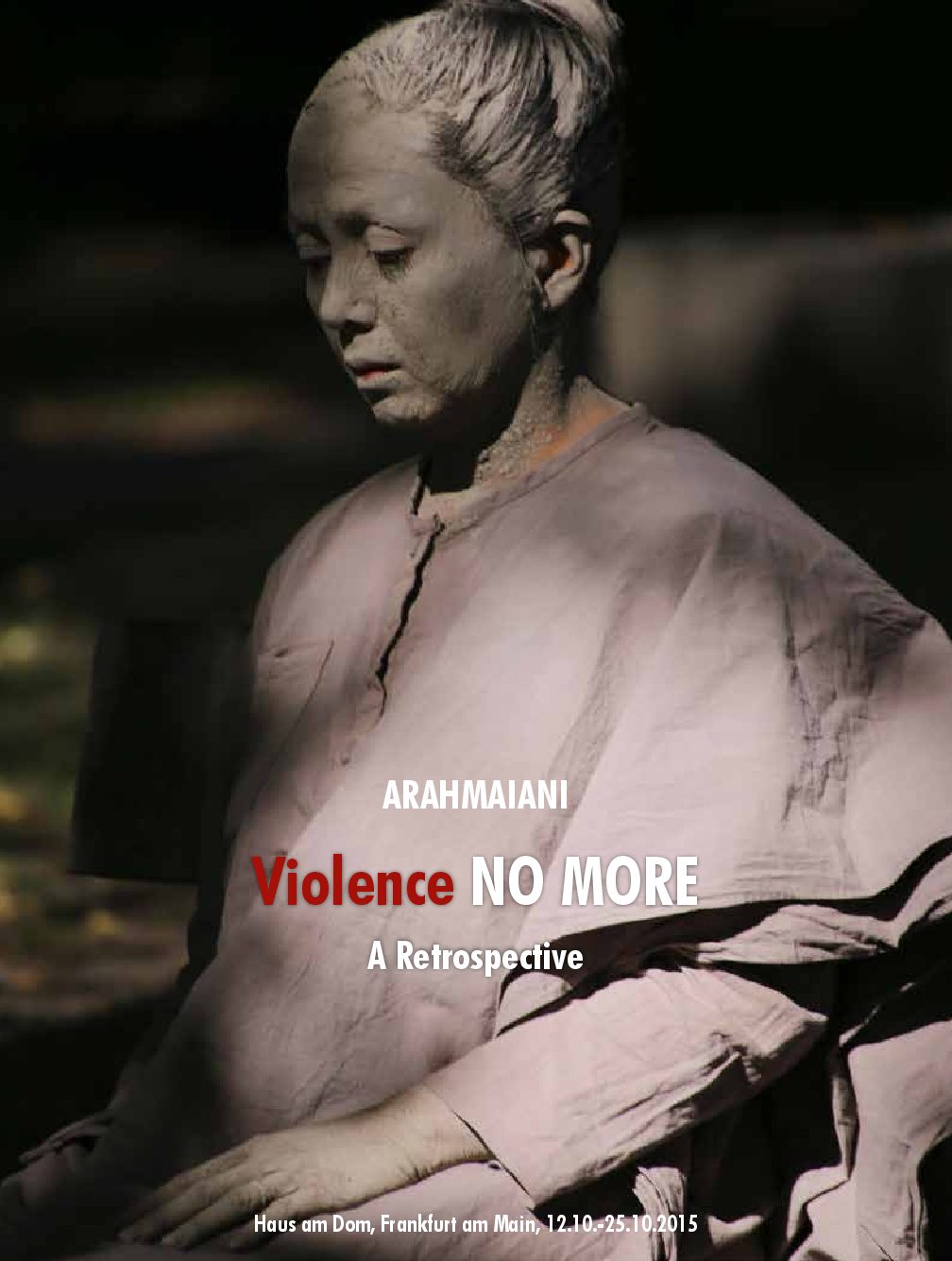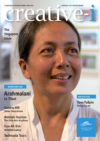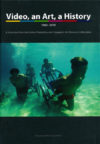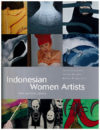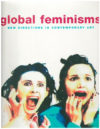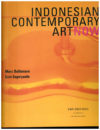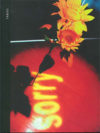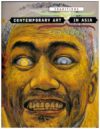One of Indonesia’s most seminal and respected contemporary artists, Arahmaiani has long been internationally recognized for her powerful and provocative commentaries on social, political, and cultural issues. Born in 1961 in Bandung, Indonesia, she established herself in the 1980s as a pioneer in the field of performance art in Southeast Asia, although her practice also incorporates a wide variety of media. For the past six years, a particular focus of her work has been environmental issues in the Tibetan plateau region, where she has been actively collaborating on-site with Buddhist monks and villagers to foster greater environmental consciousness through an array of ongoing community projects. Shadow of the Past (Sept. 15 – Oct. 29, 2016) marks the first solo exhibition devoted to her artworks inspired by her ongoing experiences in Tibet, and features new installation and video works alongside a series of paintings.
The exhibition explores themes of spirituality (particularly informed by Tibetan Buddhism), cultural syncretism, humanity’s interconnectedness with nature, and the place of the feminine in religious traditions and in spiritual life in general. Arahmaiani is fascinated by the buried past of her native Java, its rich Hindu-Buddhist cultural heritage – which is now often under-recognized – and the monumental temples that were overgrown for centuries until their rediscovery in more recent times. Indonesia once had vital centers of Buddhist learning that were sought out by students from across Asia, including Atisha (982–1054), who became one of Tibet’s most revered lamas. Tibet has become an important part of Arahmaini’s own spiritual journey, both as a woman and a Javanese Muslim. The exhibition begins with an installation, Descending Rainbow, that was inspired by her meditation practice and her focus on ecology and the feminine. It features a richer, more colorful version of a Tibetan woman’s robe, a veiled meditation mattress, and a mandala made from living plants. The installation is also the setting for a new performance work of the same title, which had its debut during the exhibition opening.
At the opposite end of the gallery, a dimly lit installation contains a bench where visitors can meditate while observing Arahmaiani’s video, Light, in which the artist and friends of different nationalities and ethnicities take turns holding a lit candle and speaking a single word that is of spiritual significance to them. Arranged on the candlelit floor beneath the video is a group of gray pillows (entitled Dukkha, referencing the Buddhist concept of suffering) that have been embroidered with certain keywords relating to emotional states such as compassion, hate, greed, etc. In between the two installations is a series of diptychs, such as Illumination and Sonam, all in monochromatic gray, a color the artist associates with the quiet peace of a meditative state. These paintings incorporate women’s faces, some crowned with inscriptions in Arabic and Tibetan, alongside flowers and other natural imagery. A second video, Shadow of the Past (Lasem, Java), is based on a performance of Arahmaiani’s that took place in early 2016, in which she covers herself with mud, evoking the long buried Buddha statues of ancient Javanese temples, and walks through the empty buildings of an abandoned Javanese town once inhabited by ethnic Chinese Indonesians. She processes through the streets, stopping to meditate in various key locations, including an empty Buddhist temple, the remnant of the spiritual life of the former inhabitants.
This exhibition is a follow up to Fertility of the Mind, Arahmaiani’s first solo exhibition in the United States, which took place at Tyler Rollins Fine Art in 2014 and presented the first ever survey of over 30 years of her performance work. These performances foreground a long and enduring personal and spiritual journey, a process whereby nothing is spared, all is equally scrutinized. They constitute an ongoing exposé of narrow dogmas, destructive patterns of thought and action, and misguided government policies, all of which plague humanity – a critique that is manifested in her peaceful, symbolically rich, and often hauntingly beautiful ceremonies, collective marches, and texts that instigate individual and collective vigilance against ignorance and injustice. They point to a common humanity that transcends divisions. Through her performances and other artworks, she acts as a formal and conceptual medium for communication, connectivity, and cooperation between individuals, communities, and nations.
Since 1980, Arahmaiani has been included in over one hundred solo and group exhibitions around the world. Her works have been performed and exhibited widely in museums and biennials, including: the Venice Biennale (2003); Biennale of the Moving Image, Geneva (2003); Gwangju Biennale (2002); Bienal de São Paulo (2002); Performance Biennale, Israel (2001); Biennale de Lyon (2000); Werkleitz Biennale (2000); Bienal de la Habana (1997); Asia-Pacific Triennial, Brisbane, Australia (1996); and the Yogya Biennial (1994). In New York City, she was included in the landmark 1996 exhibition, Traditions/Tensions, at Asia Society, as well as Global Feminisms at the Brooklyn Museum in 2007. Her performances and other artworks have recently appeared in institutions in the United States, Canada, Germany, the Netherlands, Japan, and Indonesia.
ARTIST STATEMENT
My latest works, in the form of paintings, videos, installations, and performance, are influenced by my research into the past cultures of Animism, Hinduism, and Buddhism in Indonesia, which left behind many temples – even the largest Buddhist temple in the world, Borobudur, which was buried for 800 years and was rediscovered around 200 years ago. Also there are very ancient books of Buddhist teaching, such as Sanghyang Kamahayanikan, which was discovered in the kingdom of Lombok when it was defeated by the Dutch military in the year 1900. Furthermore, there is the relationship in ancient times between Tibetan Buddhism and local Buddhism in what is now Indonesia (which in the past was of the Mahayana/Tantrayana sect). A monk known by the name Lama Atisha, who became a reformer of the Buddhist religion in Tibet and who founded the Kadampa school, once studied for twelve years in the Buddhist university in Sriwijaya (the ancient kingdom in Indonesia), where he received the guidance of a local master by the name of Dharmakirti, who in Tibet is known as Lama Serlingpa.
Besides this, my activity with the monks and the laypeople in Lab village, in the Kham region of Tibet, over the past six years, with the goal of solving environmental problems, is also of course another source of fresh inspiration, which has a relation to the past of Java, my place of birth. The Tibetan Plateau – which is also known as the Third Pole and Asia’s Water Tower because it is the source of seven large rivers on which the livelihood of more that two billion people depends – is under the threat of draught. Climate change, also known as global warming, has caused the glaciers and even the permafrost to melt. There have been many disasters at the upstream areas of the rivers, such as floods and mudslides. Efforts must be undertaken to prevent larger disasters, particularly to answer the issue of the drying up of all the springs there.
Another aspect, which is no less important and is very influential in the formation of my ideas and thoughts, is my collaboration with academics in Passau University in Germany. This has given input concerning the development of science with all its challenges, issues and limitations. Also, there is my collaboration with spiritualist leaders from various faiths (Islam, Catholicism, Protestantism, Judaism, and Hinduism), which of course offers much input as well as understanding of diverse religions, cultures, and “spiritual traditions.” Thus my new works might be more of a contemplation on the present condition of life, which is full of issues and challenges. Which is under the threat of ecological destruction. Or which is awash with the suffering of those who are poor and marginalized in this less than just economic system that tends to be profit oriented. I try to imagine a brighter future for life and try to change the direction of thinking that causes destruction and inhuman conditions.
Arahmaiani Yogyakarta, August 2016





